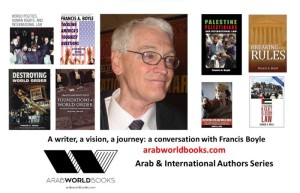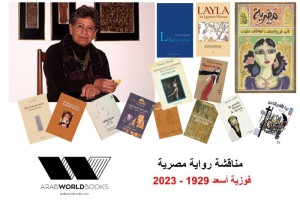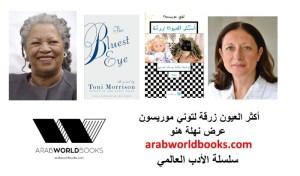Dr. Sabri Hafez
Translated by: Hala Kamal
Miral El-Tahawy’s new novel, Naqaraat Al-Thiba’ presents a world undergoing disintegration, or rather subjected to ruin and decay. It offers a vivid image of this world’s old histories and portrays the details of its decline and extinction. It shows the way in which it becomes infiltrated by the elements of disintegration and collapse, destroying the basis of its structure, in a subtle process of gradual destruction, whose mechanisms went unnoticed. This same world is seen as being unaware of the approaching rural counterpart, crawling onto its margins and invading its space – expanding and occupying its ground bit by bit. It is a world falling into the grip of annihilation, yet struggling in a hopeless attempt to release itself from annihilation’s clutch. It is a world born out of Bedouin life – a world experienced by the author herself – which lies at the centre of the writer’s interest and attention as evident in her first novel Al-Khiba’ (The Tent). It is the world of nomads who used to live a life of hunting in the Egyptian Eastern Desert. They finally settled down, after being assigned by the authorities expanse areas of the desert at the beginning of the twentieth century. Yet, they could never comprehend the reality of the rules governing the rural and agricultural lifestyle; and hence continued to hold on to the fringes of their old world and its ancient histories – ruminating on their glorious past and preserving their ancient traditions which had ceased to match the present day lifestyle in the wake of civilization and sedentary life. These people hold on to their old genealogies, thinking that their lineage and ancestry distinguishes them from others and connects them to the authentic Arabs who introduced Islam to the land of Egypt; and managed to preserve the deep-rooted traditions of the Egyptian desert life.
The author portrays a world that has undergone a transition from the stage of Bedouin nomadic life to the stage of feudalism, without even realising their transition or benefiting from the stable agricultural structures, despite the fact that they settled down near the valley and at its rural edge. The valley continued to brush against the borders of their world – gradually overtaking their land. Miral El-Tahawy uses their experience as a metaphor for what happened in Egypt as a whole; the people having disregarded the external intentions diverted against them. Hence carrying them from bad to worse within a general context of dire Arab times.
Retrieving Memory
The novel consists of ten chapters. It portrays its curious world through the techniques of narration retrieved from the memory, by means of a narrator frequently confused with the author/protagonist implied in the text/girl, who is trying to retrieve her mother’s story from concealment and oblivion in order to learn the truth about what had happened. She tries to reveal the mother’s defiance against tribal practices: a reckless defiance that ruined her mother’s life through an act of bloody cruelty. It is the story of a girl named “Muhra” (foal) who does not tell her own story, but similar to any genuine foal is seeking the truth about her species. Also, as is clear from the title, she is similar to the desert guides and track tracers, tracing “the gazelles’ steps” or their tricky traces marked on the desert sand. The structure of the narrative corresponds with the experience that shapes it, in the sense of reflecting the structure of story-tracing on the one hand and seeking the gazelles’ traces obliterated by the dust of time and the winds of change. The novel seeks to understand what had happened and to bring together the parts of the torn picture fragmented by the power of time and oblivion.
The novel opens with a line of Bedouin verse: “I placed a tombstone on my chest … without death…”, as though pointing out to the reader that the text as a whole is but a kind of a tombstone of a yet living world. Still, the text senses the necessity of placing a tombstone marking this world. It also acts as an attempt at creating a textual “tombstone” of the mother’s (Hend’s) actual tragedy – the tribe having disposed of her grave and buried both her story and life beneath the sands of intentional negligence, concealment and oblivion.
Awareness of Collapse
Similar to other texts of the “new fiction of the 1990s”, Miral El-Tahawy’s novel reflects the awareness of falling into the grip of death, and is governed by the determinism of the blocked horizon that controls the world of similar texts which are replete with both despair and hope at the same time. Therefore, its basic awareness is one of disintegration and collapse before anything else. The text attempts to retrieve Hend’s story from loss, and to comprehend the reality of what had happened to her, as well as the nature of the unfair Bedouin “justice” which would not allow for a woman’s rebellion against tribal conventions, particularly regarding her honour and reputation. Yet, the text cannot achieve such an effect without this sharp awareness of the disintegration that permeates each and every detail in the text – like a razor cutting through it relentlessly. Hence, allowing death to constantly hover in the vicinity of a world sentenced to destruction.
The details within the text seem to establish multiple tombstones carrying complex significances. The are the signs of death, being at the same time marks of the birth of yet another ugly reality beneath the surface of a fading away and dying actuality. On the other hand, they are tombstones marking a life that is achieving its self-realization through creativity alone; thus offering Hend’s story the power of life and ensuring the survival of the text; against the predestination of waste and loss. The texts of the 1990s present writing as an act against death, disintegration and collapse; and in this particular text, the act of writing brings Hend back to life and retrieves her from the clutches of death and oblivion.
Urban Bedouin
The text opens with a photograph – photos being tombstones – of the three sisters: “Sgawa”, the eldest; “Hend”, the middle, who is the most beautiful of them all; and “Sahla”, the youngest, who is the least beautiful but having the strongest character. Similar to old photographs, the picture is fond of the traditional hierarchical structure, as it features Hend seated in the lap of a dark woman, “a slave” or “servant” named “Inshirah”. She is a character portrayed in the novel both accurately and affectionately, thus combining humanity and vitality. Similar to old photographs, the narrative realizes that she has fallen in the grip of a human force – invisible in the picture, yet in full control of all its details.
This force is represented this time by the grandmother “Al-Najdiya” who is present beyond the picture frame, and who softly controls the domestic world. She is truly a woman of Bedouin origin “the daughter of Al-Jibali family from Najd, descendents of prophet Mohammad” (p.39). Yet, she has combined her Bedouin origin with urban knowledge, as “she knows how to draw her eyebrows with a black eyeliner, and to sniff the snuff-powder through her long sharp nose; her eyes lined by the kohl of temptation. Lamloum Pasha Al-Basel was proud of his wife; and although she was a genuine “foal”, she never wore a black veil on her face. A soft lock of hair came out of her head-cover, and like a Turkish princess, she wore gold pendants in the middle of her forehead. She knew how to make pots of oven-baked pigeons and vegetables, as well as stuffing lamb meat with thyme and pistachio. In the tray holding the pottery bottles, she would place camphor-tree leaves, adding to the water drops of distilled rose-water essence; as well as inserting henna leaves amidst the clothes (p.40). It was, therefore, natural for this woman, who combined the glory of Arab authenticity with urban knowledge, to transform her husband from a mere Bedouin to a real “Pasha” who deals with men of power and authority. And she urged him to send his daughter to the “Mere de Dieu” school.
The Sixth Finger
“Al-Najdiya came from Kafr El-Zayat, riding like a true Arab daughter, in a women’s cabin in a caravan of camels, with gun-fires roaring for seven days preceding her arrival (p.39). Thus, the three sisters were born in this authentic Arab family with urban culture. Their fate is not in the least less tragic than the fate of Chekhov’s three sisters. And like Chekhov’s sisters they had what could be defined in Chekhov’s terms as the unnecessary “sixth finger” which cripples the hand instead of increasing its effectiveness. They received their education at the “Mere de Dieu” where they spent eight years, and acquired the arts of refined urban culture from their mother. Yet this education, most fruitful in Hend’s case, becomes unnecessary in the sheer Bedouin world, which still believes that it is better for a free Arab woman to be “eaten by a crocodile than taken by a peasant (p.22), even if he were the son of the Khedive of Egypt himself. And also continues to believe that “a girl marries her paternal cousin, by force” and that “an Arab girl is like an obedient female camel, rests wherever tied, and goes wherever driven (p.53).
Their education, therefore, has become a calamity and a source of their misery. “Sgawa” is victim to fits of epilepsy that leave her “cold in the limbs with contracted features … falling to the floor again and again … before her final fall over the balcony pillar shaped like a pottery bottle (p.41), leading to her immature death. Although the text does not reveal the cause of Sgawa’s severe disease, incurable by all Bedouin remedies such as hanging a ruby stone in the middle of her forehead, and dressing her in pure silk to calm her down and exorcise the evil spirits, nor even tattooing her so as to relieve her from the stress. Yet, we know that there is a huge gap between what she had learned and the society’s expectations of her. We also realize that her fatal disease was caused by her frustrating and impossible love-story with “Sahm” who is “a slave of Monaze’s family” (p.42) and the son of their servant/slave Inshirah.
Hend’s Tragedy
Hend’s story is the most tragic of them all. She was the only one among them who “knew how to wear tight pants and straw hats with roses” (p.13). “She could turn on the records to learn rhythmic dance; and sit alone trying to imitate Fathiya Ahmad’s voice. She would rest under the trees in the garden reciting excerpts from “Magdoline” in effective voice, before her brother – who lives now in New Jersey – could spot her out and tear the novel she had borrowed from Miss Angele, the school headmaster’s daughter; and then slap her on the face causing her nose to bleed” (p.61). They married her off to Mitlig Al-Shafei Al-Saleemy, who had received his education at Victoria College, and almost obtained his B.A. in English Literature if not for his infatuation with those gatherings around the tribe’s fire (p.16). He was fond of chasing the servants in his youth, and Hend knew well that “he was chasing young servants and panting for Farhana’s breasts; or chasing Roda in the hutches on top of the stacks of straw (p.59). And still, Hend married him because her father, the Pasha, said that “her cousin has the priority” (p.63).
Mme Christina made her a puffed up dress with a petticoat. They got her a bottle of lavender perfume, a bracelet and a pair of shoes on thin high-heals. She moved among the lanterns, carried by the slaves … in a mobile women’s cabin, just like both her mother and grandmother (p.64). But she suffered from this marriage, as she would stand for long hours waiting for him to come back from Fatma Al-Koromiya’s house, leaning against the walls, his clothes carrying the smell of tobacco and his mouth smelling of opium, hashish and other things unknown to her (p.67). Even after his marriage to this beautiful and sensitive woman, this boorish Bedouin continued “sleeping in Fatma’s house, while Hend could not stop crying” (p.67). She tried going back to her mother’s (Al-Najdiya’s) house, and “swore that she would live a servant’s life in her father’s house if only they did not send her back to him. She said she would die if they insisted on sending her back” (p.68).
But they insisted on her return and said that she was acting like “a spoilt girl … and that she should try with him harder because all men act in a heedless way and then go back to their senses … So she went back facing the late-night dew with more tears” (p.68). Then she started going out at night herself, and through specifically feminine revenge, she grew fond of the Dutch or French painter “Pierre Camm” who “called himself Soliman and lived in the house of men, telling stories about the monkeys and slaves in the Sudan” (p.60). She went to him, and he painted “a picture of Hend lying down naked” (p.61). This painting was sufficient for them to sentence her to death, by locking her up in a room and blocking its door. The one and only access to the room was through an opening in its ceiling through which they lowered food for her to eat. They “bound Hend’s feet together and tied her to the bed. Inshirah said: I’m staying with my master’s daughter till time comes up (p.48). And so she entered the room before they locked them in, and only came out of it after Hend’s death.
The Child “Muhra”
Hend had a little child called “Muhra” who is seen in the picture sitting in Sahla’s lap – Sahla having replaced her sister, in a simple wedding, and lived in the same room where her sister used to live before. Sahla became Muhra’s mother, without really becoming Mitlig’s wife proper. Mitlig was the man who had ruined Hend’s life with his reckless behaviour – consciously or rather unconsciously. But Sahla never absolved him from the responsibility for her sister’s deadly fate. She, therefore, decided to take her niece to the house she had inherited from her father, located in Manial El-Roda in Cairo. This is were she raised and educated the girl who had taken after her mother. The girl was “fond of Layla Murad’s and Asmahan’s hairdo” (p.71) and appreciated the civilized life that the boorish Bedouin life deprived her from. She wanted to educate her niece and save her from her mother’s deadly fate, though she did not rebel – the way her sister did – against the extreme injustice imposed by the Bedouin lifestyle. Rather, her rebellion was a kind of suppressed rejection of the man who had caused this tragedy.
He, in turn, realized this rejection, yet his pride prevented him from acknowledging or facing it. So he dealt with the situation in a kind of restrained arrogance. Whenever he wanted to talk to her, he would address his little daughter instead, revealing his pains and concerns, and seeking her forgiveness for his deeds. The circumstances came to Sahla’s aid, enabling her of revenge without suffering its consequences. The father then underwent a stage of deterioration and disintegration identical to the one inflicting the world he had decided earlier on to adopt – with all its pleasures and obedient servants – after having rejected the world of modern education made available to him through the famous Victoria College.
A Significant Metaphor
The father started struggling against the destructive forces constantly eating at his world. Mbarak, the slave, sent his sons as well as the rest of the slaves to work in the Oil States (of the Arabian Gulf) where their work would be highly appreciated. The land then started shrinking as other families (the Gharabwa and the Baramwa) began buying land – bit by bit; while he was in constant need for money and had no other choice except selling off more and more land. His primary project of raising pure stocks of horses was failing, and the same thing happened to his other project of collecting rare falcons and hawks for hunting. Therefore, he spent the last days of his life writing statements and sending them to the authorities in the Arab Peninsula, requesting them to let him return to the land of his old tribe in Najd or Hijaz. “He wrote a long message to King Faisal bin Al-Saud emphasizing that the Bani-Saleem tribe had supported its sister tribes Shamar and Eneza before the oil boom, at the time when the Arab living there waited annually for the pilgrimage “mahmal”; and pointed out that Bani-Saleem had opened up their pastures to their sister tribes for over a century of time.
He therefore stated that it was time for the tribe to go back to their original place in Najd, and that they be taken into consideration now that the region is blessed with prosperity. He also stressed that he had more than one document asserting his Hijazi origin, in addition to several contracts of tribal alliance, for better or for worse – documents signed by King Saud and Sheikh Nuri bin Sha’lan, the chief leader of Al-Rola tribes (p.32). Yet these petitions fell on deaf ears. However, the father’s pleas in the novel create a significant metaphor reflecting the Egyptian condition in those dire Arab times, when Egypt has to beg for its rights; and unable to gain them by force, no one listens or pays attention to those demands.
The Death of a World
This is the story of the three Arab sisters who have lived through a “Chekhovian tragedy” – a tragedy of regression and boorishness as opposed to delicacy and sensitivity. It is at the same time the story of a world fading away and dying, while the process of writing attempts to snatch it from the clutches of imminent death. The character of the old slave “Abu Shareek Al-‘Ayadi” who was one of the desert guides, well experienced in its roads and tracks, is seen turning into an old man lost among the cement blocks that have replaced the old camel-hair tents. His transformation is a symbol signifying the world, turning the symbol into a metaphor replete with visions and significance, as the man becomes an example of loss. The novel seeks to mourn him, and condemns this ugly stupid process as well as the loss of memory and ancestry. “Abu Shareek Al-‘Ayadi shook his head and turned this cup of coffee over the ashes. He wished to talk more about Khashm el-Mouss, Roda and Inshirah as well as the caravans of slaves coming on from the lands of Harhar. But her felt he had to go, leaning against the murals in-between the cement walls – at a loss and not knowing how to cross those walls to reach the sandy land. There is nothing beyond, except the high-way where rushing cars drive by without stopping to ask an old caravan guide about the Khor El-Sab’ water-well or the bushes of Al-Baga land” (p.110).
The times have changed, unfortunately not for the better, but have turned uglier. The origins of people are all lost, the values dispersed, and ruin prevails. Every one is now seeking old histories, or even rise above this humiliation; addicted to hope, failure and the continuous state of disintegration. The novel has truly become a fictional metaphor of what is happening in Egypt as a whole, through this extremely specific layer of people. Time has carried them backwards, preventing them from the benefits of progress for which they have given away so much, at a very high expense.
A Disintegrating World and Disappearing Values
By: Editor - on: Wednesday 18 October 2017 - Genre: Book Reviews
Upcoming Events

Joseph Conrad's Heart of Darkness Discussion
April 27, 2024
Join us for a special discussion of Joseph Conrad&...

A writer, a vision, a journey: a conversation with Francis Boyle
February 24, 2024
This event took place on 24 February 2024 Yo...

Discussion of Fawzia Assaad’s An Egyptian Woman
November 25, 2023
In celebration of the life and outstanding achieve...

Toni Morrison's The Bluest Eye, A Presentation and Discussion
October 28, 2023
This presentation and discussion of Toni Morrison&...
